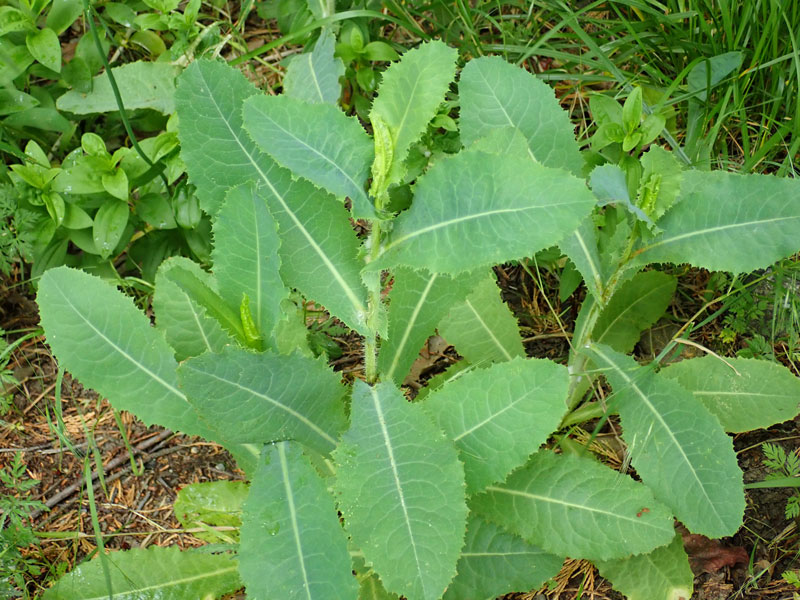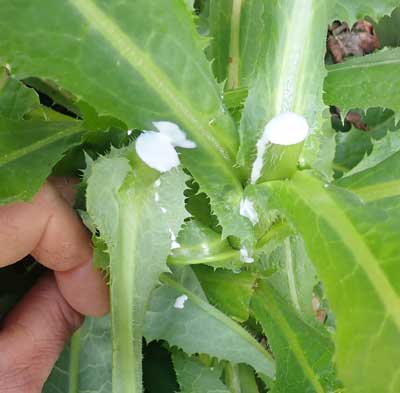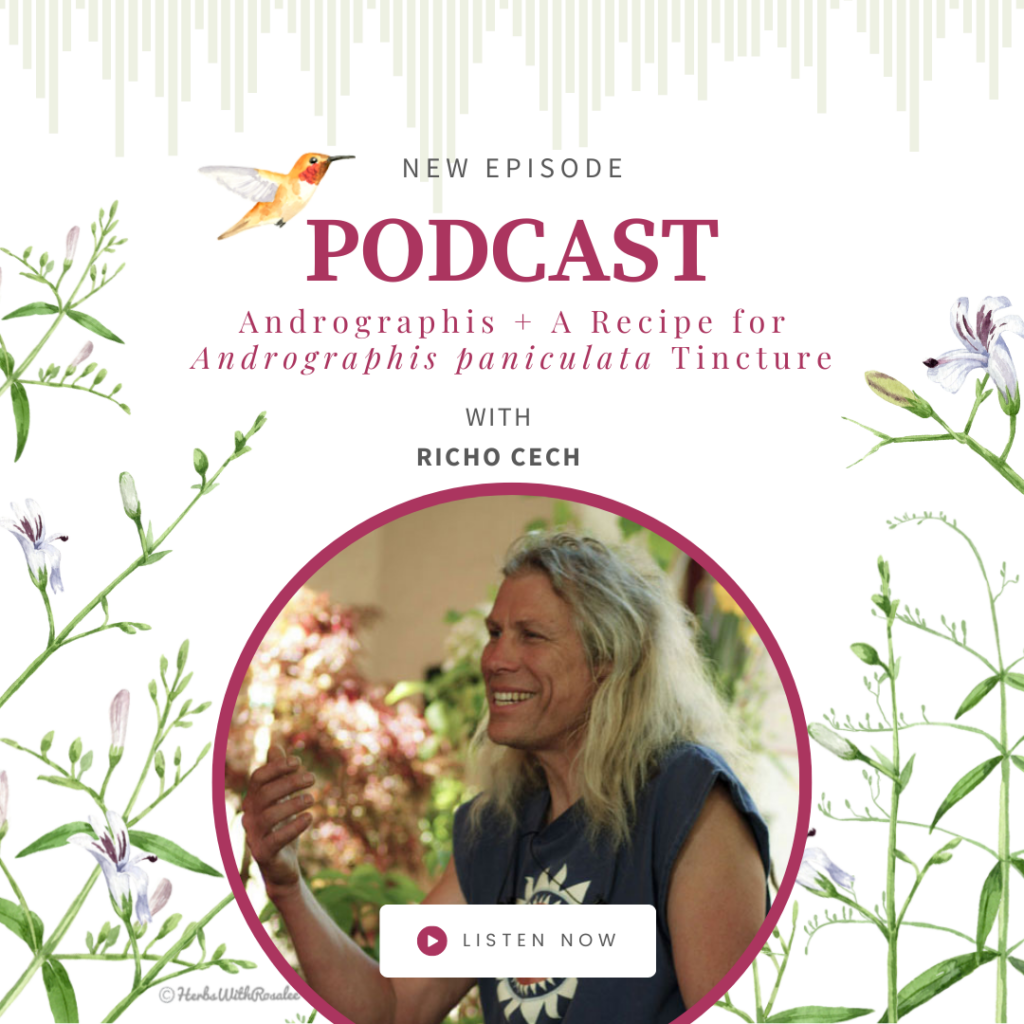
We like to leave our best plants to produce seeds, seeds that may be harvested and set aside to plant at a later time, or seeds that fall spontaneously to the ground, germinate and grow in season. We follow the “Mother Plant” concept where, given that one is working with open-pollinated plants, a single plant can produce enough seedlings to plant a whole row come the following year. Wild Lettuce (Lactuca virosa) is a good candidate for this, as the seed germinates best in moist, cold soils, and may be slow to germinate in warm greenhouse conditions.
How does one identify volunteers in the field? Well, the volunteers will appear in the area under and around the mother plant, or in the case of short-lived plants like Wild Lettuce, in the area where the mother plant once prospered but is now gone. Every seedling has its individual characteristics. Some will carry the seed coat up above the soil level and may be identified that way. Others will demonstrate peculiar size, color or smell that help you know exactly what they are. Practiced gardeners will identify the seedlings because they recognize the plant. Wild lettuce seedlings have leaves that look like lettuce and are taprooted. When the taproot is broken, they exude the bitter white latex known as lactucarium, so if the root bleeds white milk, you know you’re on the right track.
Speaking of the white latex, one of the active principles found therein is lactucin, a sesquiterpene lactone that is considered to be sudorific and narcotic (sleep inducing) as well as anodyne (pain relieving). There are several reasons why wild lettuce is of interest–the plant does produce edible salad in the winter months, and in the summer, when it goes to flower, may be milked for the lactucarium. We have demonstrated this technique in a YouTube video. Wild lettuce is sometimes called “Opium Lettuce” although it contains none of the protopine alkaloids that are responsible for opiate addiction, and will not register as opiates in drug tests.
I like to bring the flat, primed with dirt in cells, right out to the field where I will be collecting the volunteers. That way I can dig them from their bed, remove any unhealthy leaves, trim the roots if necessary, and plant immediately into the rich soil in the pot in the flat. A hole is made in the potting soil and the root is dangled straight down into that space, then when the crown comes even with the edge of the pot, the soil is firmed back in around the seedling, making sure to exclude any air pockets. Whether planting taprooted annuals, herbaceous perennials or woody trees, it is never a good idea to “J-root” the seedling. That is, the taproot is planted straight down, and if this is impossible due to the length of the taproot and the shortness of the pot, then the taproot is cut off so that it goes in straight down. Taproots hold the plant in place and delve deep to find water. Smaller lateral hair roots access nutrients and dissolved minerals. It is a good sign when the seedling has both a tap root and healthy lateral hair roots.
Once the seedling is pinched into place, then more potting soil is brought in to fill up to the crown, this new soil is tamped into place, and once filled, the flat should be watered. For winter or early spring propagation of Wild Lettuce, the flat could be left outdoors in a sheltered location, as the plants are extremely cold hardy. Alternatively, the flat could be brought into a solar greenhouse. Over time, the seedlings will bulk up, fill the pots with roots, and become extremely good candidates for replanting come spring. This is the entire point of utilizing spontaneous seedlings–one avoids the steps of seed collecting, cleaning and planting while producing a powerful seedling that can be planted back out to the field at the appropriate spacing come spring. Utilizing this technique, growers will find that the strains of medicinal plants will become larger, stronger and better-acclimatized to local conditions. Working with the medicine, there is an opportunity to instill each step with the power of positive aspiration. These plants will grow well and produce good medicine for people in need. They will help the restless take rest, and they will help those in pain find relief.

You can find wild Lettuce seed and plant at our online shop. Wild lettuce seed is also part of our Survival Medicine Garden Seed Collection. Click here to learn more about this useful seed collection for first-aid and emergency use.



Love this, Rico! I use our Willamette Valley wild lettuce in winter salads, just noticed some whilst planting my tea camellia, var. Sochi.
And love the reminder to think of the plants and the Mother as we work with the herbs.
Wild lettuce is a favorite deer forage plant on our farm. We find it deters them somewhat from nibbling on other crops. Perhaps they get sleepy after eating it.
Do you know if the root can be used medicinally?
Can you use Lactuca serriola the same as you would Lactuca virosa?
Yes, they are interchangeable. r
This is so interesting! Thank you for all of this information!!!